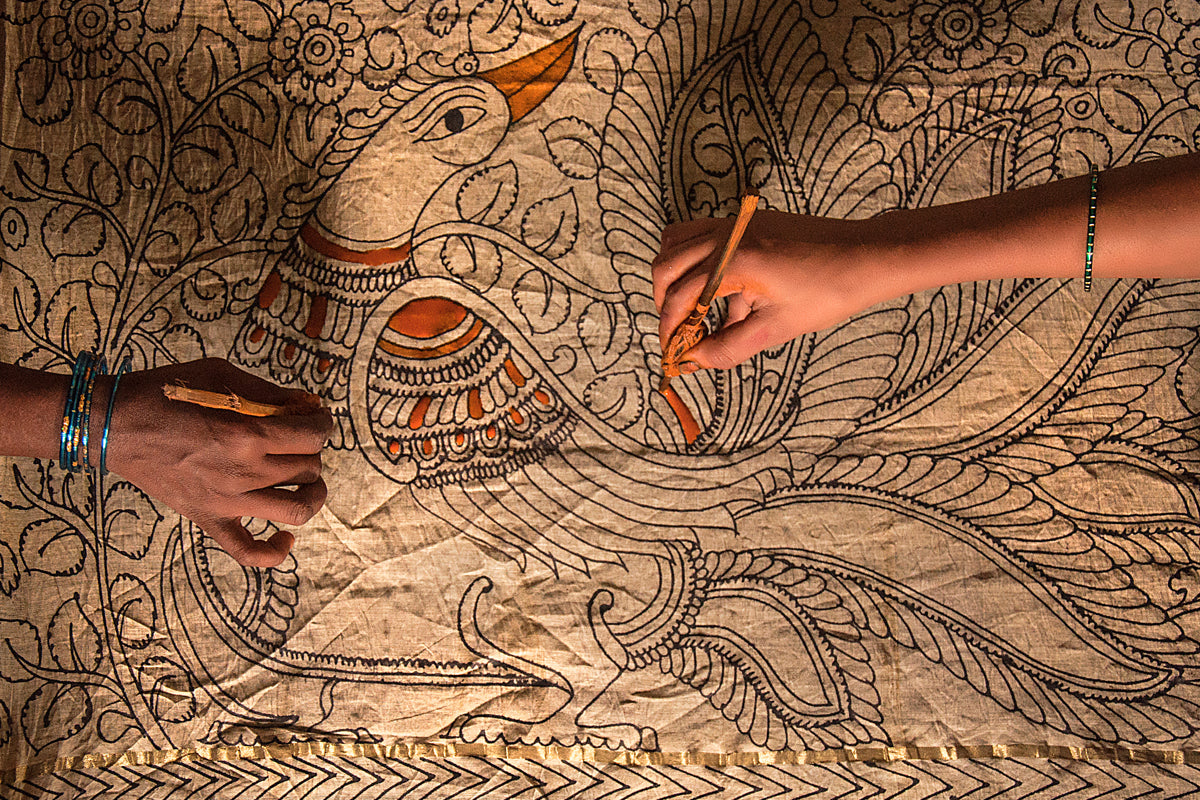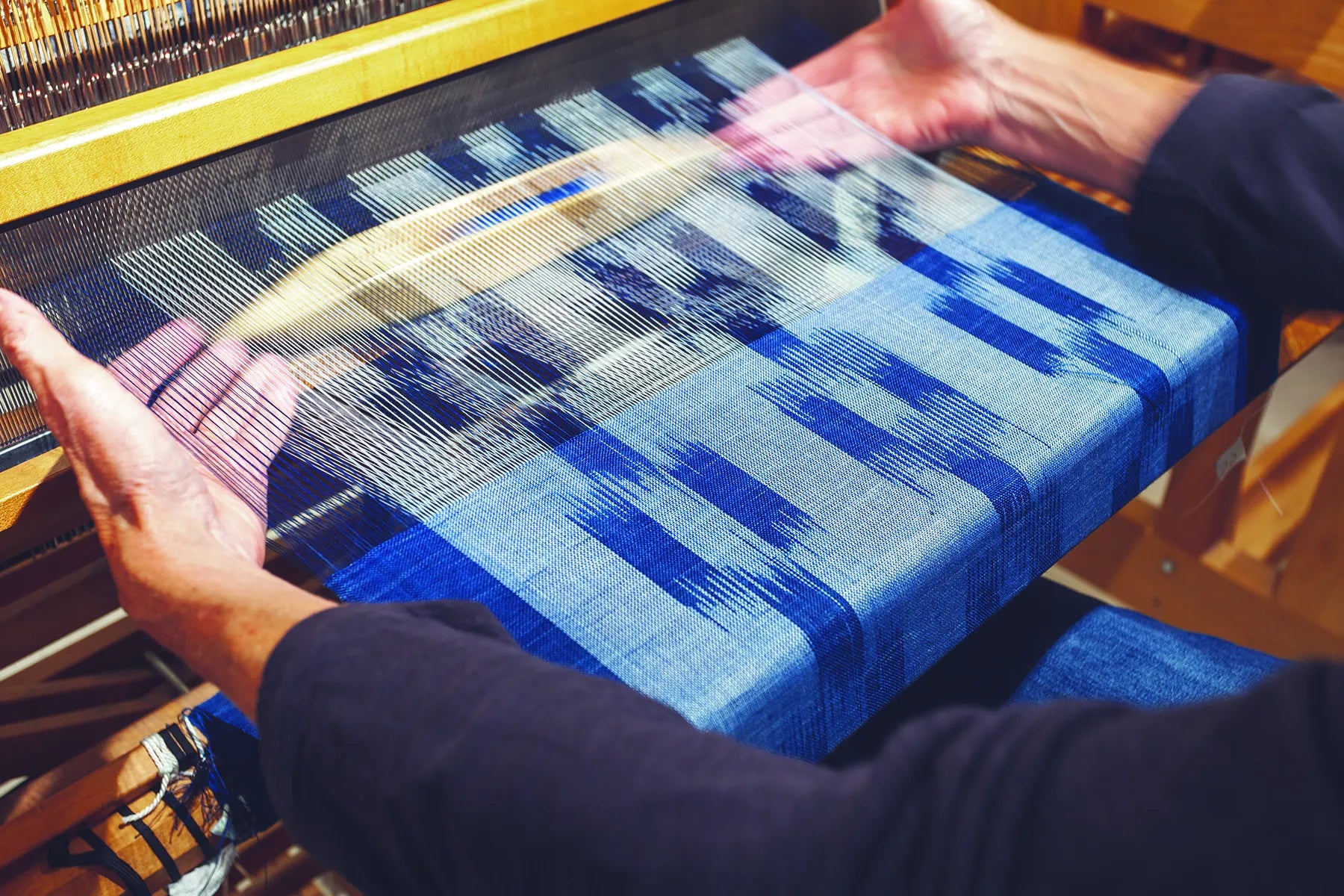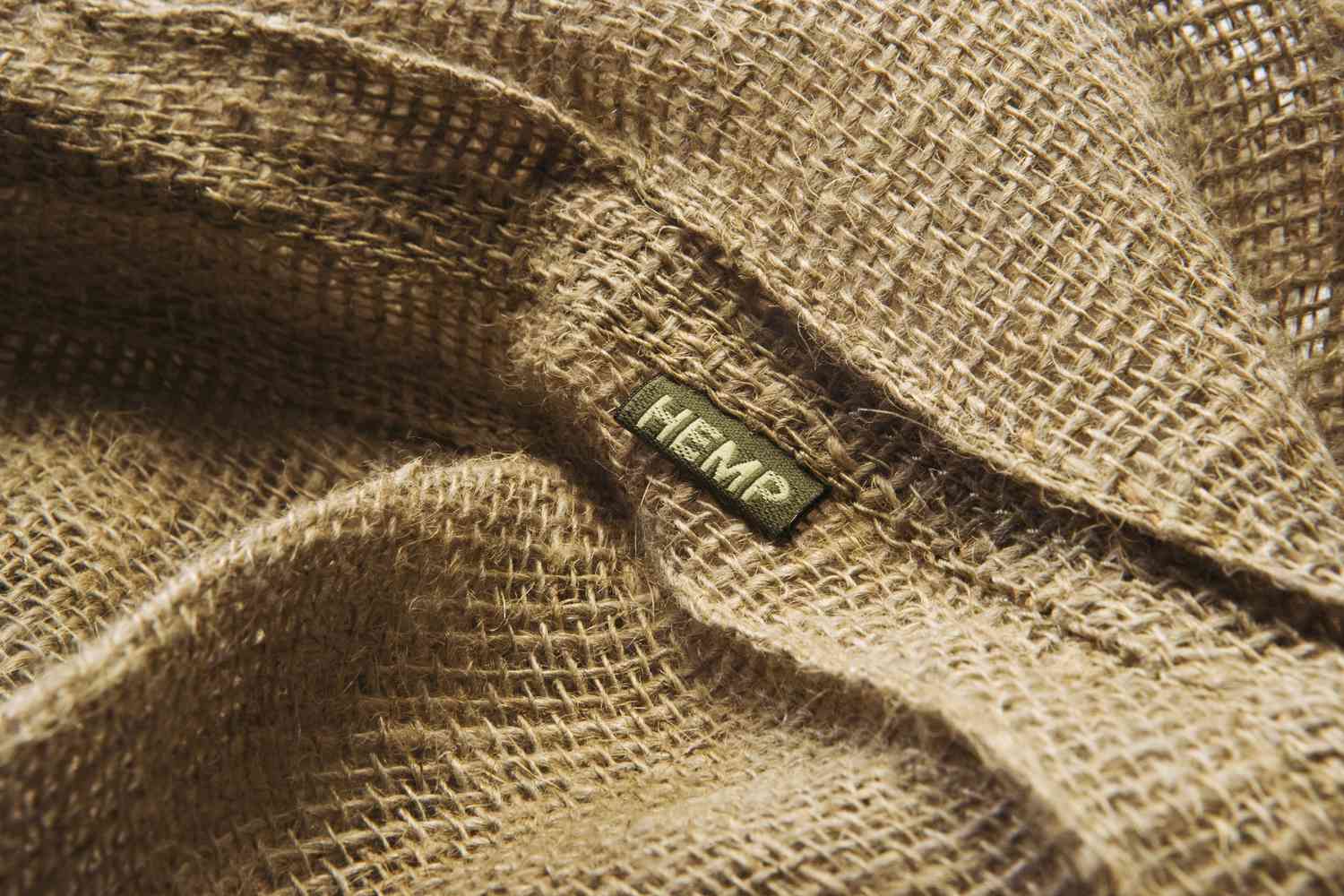
Kalamkari Fabric
The visual manifestation of artists’ stories, an empyrean art form, Kalamkari is derived from the Persian words Kalam meaning pen and Kaari depicting art. It is a textile print art form where the kalamkar (artist) uses a tamarind pen as the medium, a piece of cloth as the canvas, and handcrafts it using only natural dyes for colors.
A 3000-year old glorious legacy, Kalamkari is used by the artisans to paint the silks and cotton into the captivating tell-tales, the glorious histories, the war stories, and the life's learnings, they immortalised their lives through this craft.
The Styles of Kalamkari
In India, the artist communities in Telangana and Andhra Pradesh have kept the legacy of this art form intact in its original form with slight cultural and heritage adaptations.
The two popular Indian styles of Kalamkari are Srikalahasti and Machilipatnam.
Srikalahasti finds its roots in the Hindu mythology and was believed to have been practiced by the chitrakattis, a group of singers, musicians, and painters who in their quest of storytelling, started using the cloth to depict the legends of Hindu mythology. Thus, the figures of deities, scenic representations from Ramayana, Mahabharata, and other Vedic scriptures are native to the Srikalahasti form of Kalamkaari.
On the other hand, Machilipatnam is a Persian-inspired style of Kalamkari, and lavishly uses the timeless Mughal-invented ornamental motifs of flora, fauna, and other elements of life. The biggest differentiator between the Srikalahasti and the Machilipatnam print is the technique. In Machilipatnam, the craftsmen use hand-carved design blocks to sketch and print the key design features on the cloth. On the other hand, in Srikalahasti, artists use traditional pens to outline and fill in the colors of the designs.
The Painstaking Process of Creating Kalamkari
Kalamkari is an invaluable heirloom for today’s generation and what makes it truly priceless is the extent of human effort and time that goes into creating a piece of this textile art.
A laborious and lengthy process, approximately 23 steps are involved in the making of Kalamkari printed fabric.
For starters, the fabric is bleached using cow or goat dung and is left to dry in the sun for a few days. The cloth is further treated in a Myrobalan solution so as to stabilize the colors from leaking. An iron solution is used to print black outlines while alum mordant is used to print the areas in red. To obtain other colors, printing resists, mordants, and immersive dyeing techniques are used. Resists made of substances like gum, wax, etc., are applied to protect colors from spreading or mixing with each other upon washing. The process of drying and washing the fabric happens after inking every color, making the entire process an intensively long one. However, the outcome is an exquisite and breathtaking piece of drape that makes it all worth it.
Pre-Requisites for Handling Kalamkari Fabrics
Authentic Kalamkari fabrics are hand-dyed and hand-printed on rich natural fabrics like silks and cotton, their upkeep requires a little attention, too. You can opt for dry clean in case of silk Kalamkari fabrics and for cotton prints, just hand wash them in mild detergent and you are good to go. Hassle-free, right?
Kalamkari, In Its Essence
The soul of Kalamkari lies in the hands of the kalamkars (craftsmen) and their vivid imagination, making the craft truly reminiscent of human’s desire for perpetual creation of art.
We, at Dorrcee, are preserving the rich legacy of Kalamkari, and to explore our, Kalamkari products visit here.


Leave a comment
This site is protected by hCaptcha and the hCaptcha Privacy Policy and Terms of Service apply.